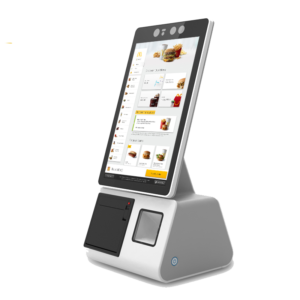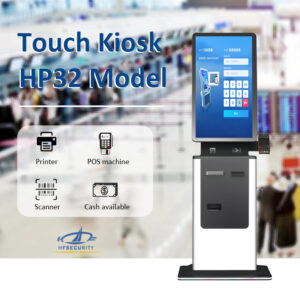Industrial Biometric Kiosk Machine Manufacturer
Biometric Kiosk Machine Manufacturer
For businesses that want to improve security and efficiency, a biometric kiosk from HFSecurity is the perfect solution. Our kiosks are designed to work with a variety of biometric technologies, including fingerprint scanners, iris scanners, and facial recognition. With our easy-to-use software, you can add or remove users in just a few clicks. And because our kiosks are built to withstand heavy use, they’re perfect for high-traffic areas. Whether you’re looking to secure a building entrance or streamline employee timekeeping, an HFSecurity biometric kiosk is the right choice. Contact us today to learn more about our products and services.
Industrial Biometric Solution Supplier
All You Need To Know About Biometric Kiosk Machine
A biometric kiosk is a self-service koisk machine that uses biometric data to authenticate a user. Biometric data is unique to each individual and can include fingerprints, iris scans, or facial recognition. Biometric kiosks are commonly used in high-security environments, such as government buildings or airport security checkpoints. They can also be found in many public places, such as office buildings and shopping malls. When using a biometric kiosk, users must first provide their personal information, such as their name and date of birth. They then place their hand or finger on the sensor to record their biometric data. Once the data has been captured, it is compared to the records stored in the kiosk’s database. If there is a match, the user is authenticated and granted access to the desired services. Biometric kiosks are an efficient way to secure facilities and protect against identity theft. They are also convenient for users, as they eliminates the need to carry around ID cards or remember passwords.

Purpose of Biometric Kiosk
Biometric kiosks are becoming increasingly popular as a way to improve security and streamline processes. Here are some of the most common uses for biometric kiosks:
-Time and attendance: Biometric kiosks can be used to clock in and out of work, making it easy to track employee hours.
-Security: By verifying identity with a fingerprint or other biometric data, biometric kiosks can help to prevent unauthorized access to buildings or restricted areas.
-Access control: Biometric kiosks can be used to grant or deny access to certain areas, based on an individual’s identity. This is often used in combination with security systems.
-Payments: Biometric kiosks can be used to make cashless payments, using either credit or debit cards. This is becoming increasingly popular as a way to reduce fraud.
-Customer service: Biometric kiosks can be used to help customers find the information they need, or even place orders. This can help to reduce wait times and improve customer satisfaction.
captures an image of the individual’s fingerprint, iris, or other physical characteristic
The control panel is used to manage the device’s settings and input data
The power supply ensures that the device has enough energy to operate properly
The display screen provides information to the user
The software is used to process the biometric data and match it against existing records
A biometric device is a security system that uses physical characteristics like fingerprints or iris scans to identify individuals. When someone wants to use a biometric device, they first have to provide some personal information like their name and date of birth. This information is used to create a unique profile for the individual. Then, when the individual goes to use the device, they will be asked to provide their biometric information. The device will compare the information on the individual’s profile with the information that they provide. If the two match, then the individual will be allowed to access the device. Biometric devices are becoming increasingly popular as they offer a more secure way to protect devices and data.
They can identify individuals based on their unique physical characteristics, such as fingerprints, iris patterns, or facial features. This makes it difficult for unauthorized individuals to gain access to buildings or other secured areas.
They allow authorized individuals to quickly and easily gain access to buildings or other secured areas without having to remember complex passwords or carry multiple keys
They prevent unauthorized individuals from gaining access to buildings or other secured areas by requiring them to provide certain physical characteristics, such as fingerprints, iris patterns, or facial features
For example, a kiosk intended for use in a retail setting will have different requirements than one intended for use in a healthcare facility
You can find them online, in stores, or through the manufacturer.If you buy online, you’ll want to make sure that you buy from a reputable seller.
If you buy in a store, you’ll be able to see the scanner in person and ask questions about it.
Finally, if you buy through the manufacturer, you can be sure that you’re getting a high-quality product
The most common modalities are fingerprint, iris, and facial recognition, but there are others that may be required depending on the application
For example, a kiosk intended for use outdoors will need to be weather-resistant
it is important to consider the cost of the kiosk and its associated software and hardware. Biometric kiosks can range in price from a few hundred dollars to several thousand, so it is important to select a model that fits within the budget







